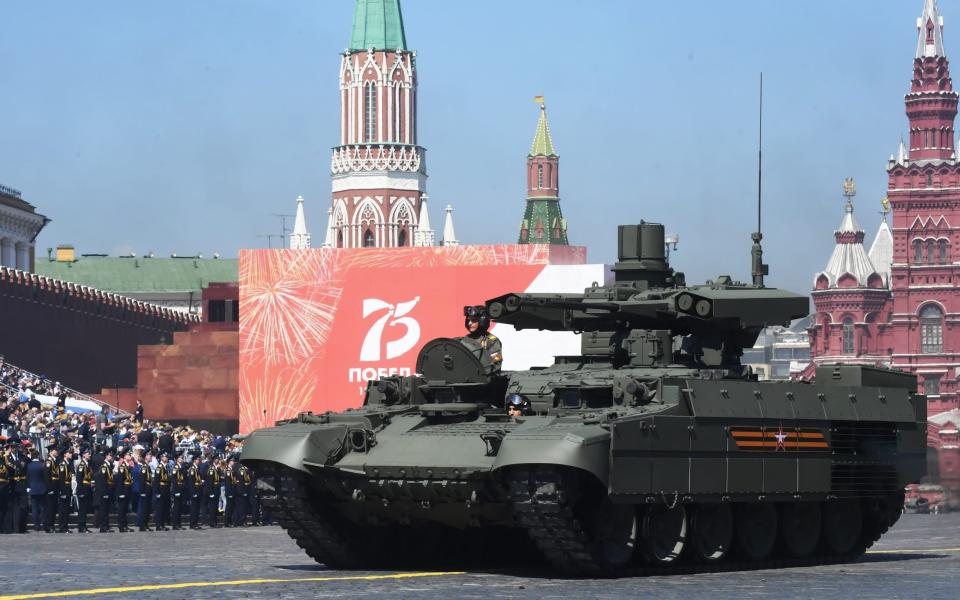FP03

Vladimir Putin has deployed his “Terminator” military vehicles in Ukraine, as Russia throws everything in its arsenal at capturing the contested areas in the east.
The Russian president had held back on sending in the notorious BMPT tank support vehicle, nicknamed the Terminator because of its indestructibility – but in a sign of increasing frustration, the Kremlin has sent them to help troops fighting in Donbas.
Equipped with four anti-tank missile launchers, two 30mm cannons, two grenade launchers, a machine gun, the vehicle has a top speed of 36mph.
Its diverse suite of weapons allows the Terminator to destroy targets ranging from tanks, to infantry, as well as helicopters and low-flying aircraft. Using a tank chassis offers the protection found on tank hulls, as well as the off-road mobility of a fully-tracked vehicle.
The vehicles, sporting the letter V, a pro-war symbol in Russia, were filmed being driven by Moscow’s 90th tank division in Severodonetsk, a city on the frontline of the Donbas offensive.
It is unclear why that had not been deployed until now, but it is thought Russia is desperately looking for ways to relieve its beleaguered main army.
It came as Moscow unveiled a new laser weapon that it claims can destroy satellites 1,500km above the Earth in five seconds.
The Peresvet laser system is the most recent in a long line of weapons the Kremlin has “revealed”, many of which are never seen again outside research laboratories.
The system, designed to destroy drones and other aircraft, was first announced by Vladimir Putin in 2018 but has never been issued to military units.
However, on Wednesday Yury Borisov, Russia’s deputy prime minister and the Kremlin official in charge of military development, told a conference in Moscow that Peresvet was being widely deployed and could blind satellites up to 1,500km high. No evidence was given to back up the claim.
Russia is known for making grand announcements about military technology. The T-14 Armata tank, first seen in Moscow’s Victory Day parade in 2015 and said by Russia to be the best in the world, never went into mass production and has not been deployed in Ukraine.
In 2017, Colonel-General Oleg Salyukov, the commander-in-chief of Russia’s ground forces, said the T-14 Armata and Kurganets-25, an infantry fighting vehicle, were “in the final stages of development” – yet neither has been seen other than in parades or in trials.
Many armed forces around the world are experimenting with laser energy.
The Royal Navy’s Dragonfire system has been in production for a number of years, while Israel briefly fielded the Tactical High Energy Laser, used to shoot down rockets and artillery shells, before cancelling the project in 2005 for reasons of “bulkiness, high costs and poor anticipated results on the battlefield”.
Laser beams need clear air to work properly and are adversely impacted by bad weather. Fog, rain and snow can interfere with the lasers, which also need a huge amount of power to work.
Equipment to produce enough electricity to make the weapons viable is normally so big that the overall system is limited to static locations, reducing utility on the battlefield. However, it is possible that in future they will be able to protect military bases and other locations from drones.
The Russian test was said to have been conducted in Sarov, a closed town in the Nizhny Novgorod region once known as Arzamas-16 because it was so secret, which is a centre of Moscow’s nuclear weapons research.
